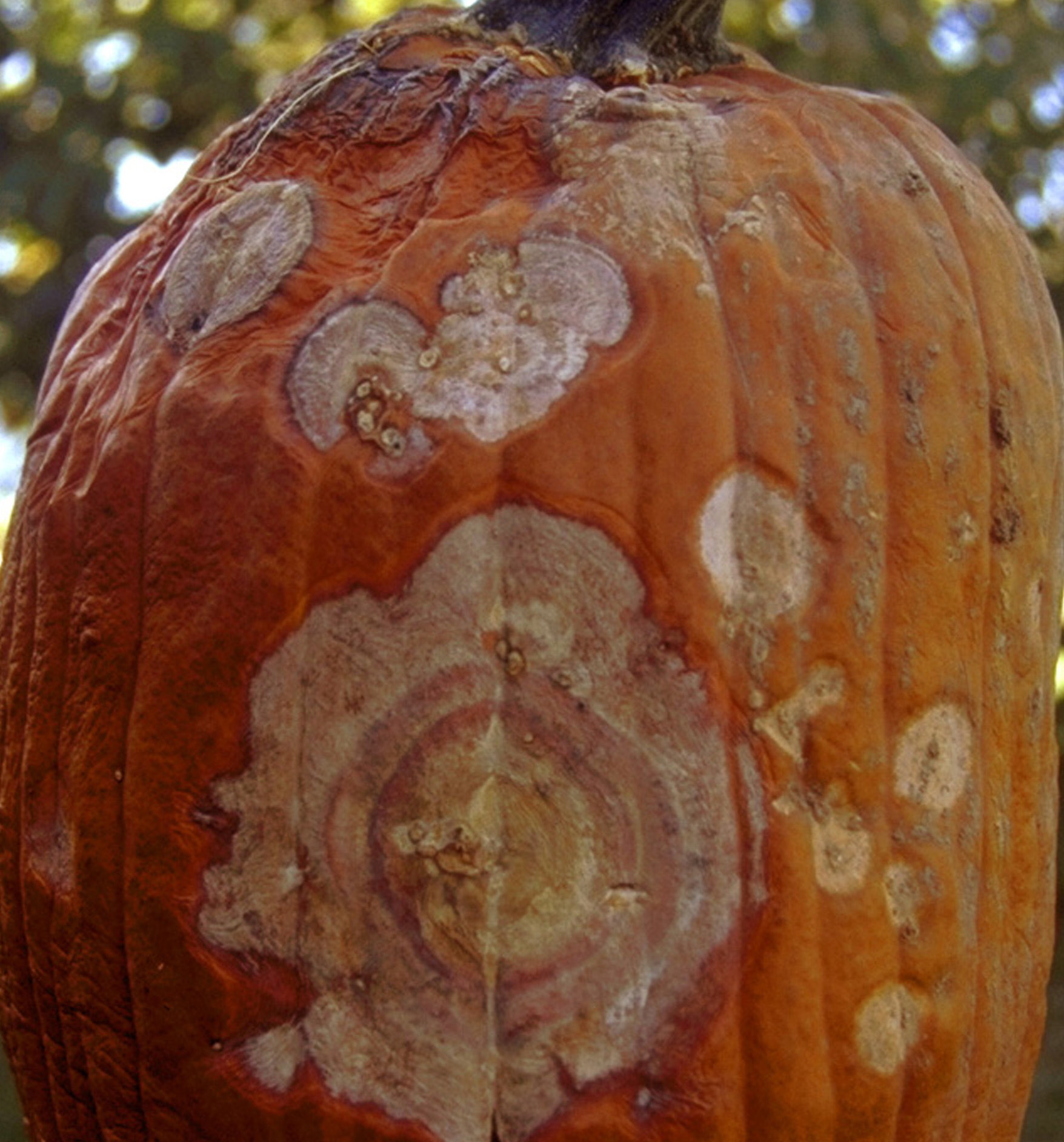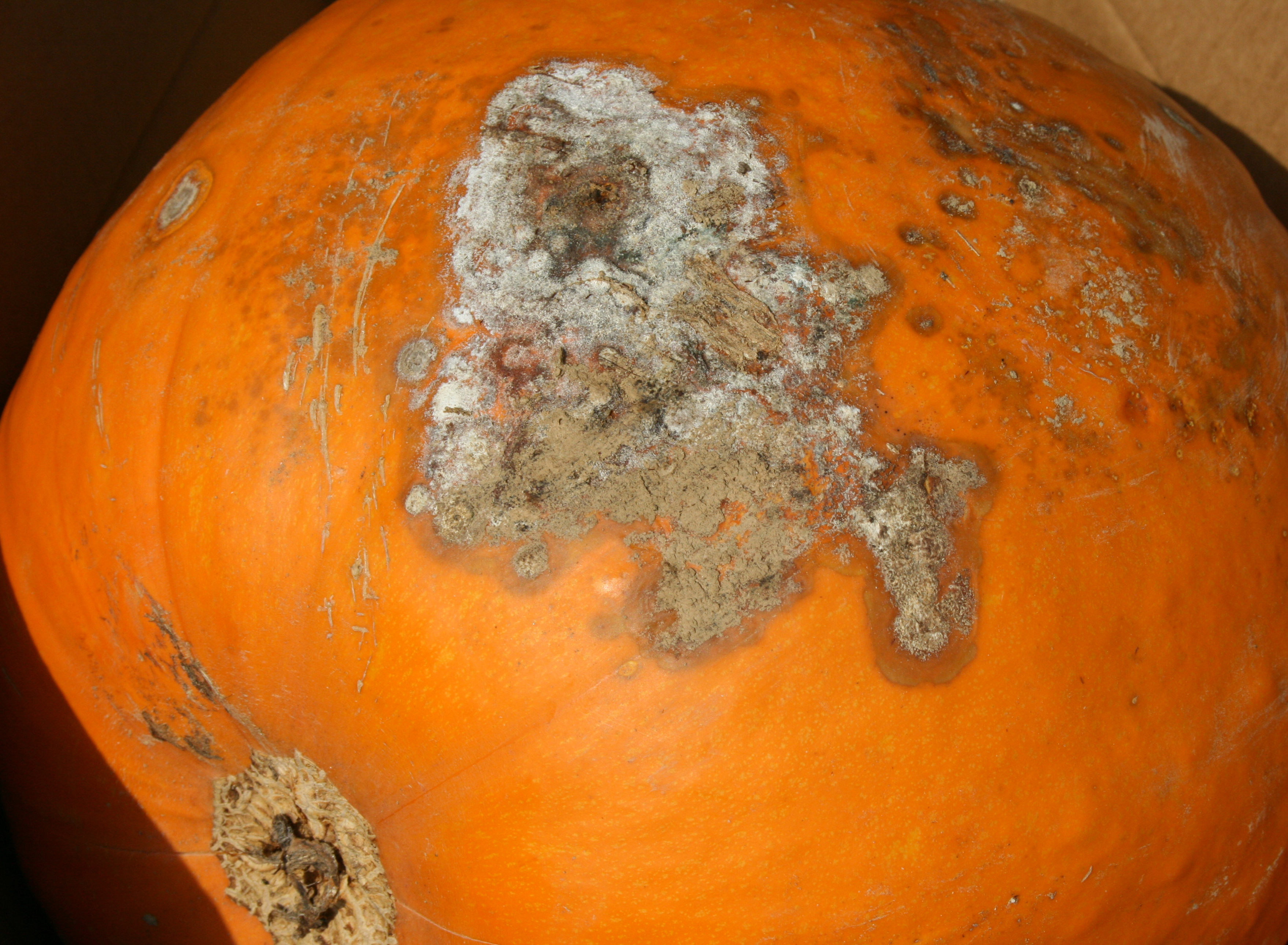Fusarium Fruit Rot of Cucurbit Crops
Return to Diseases
Fusarium fruit rot (Fusarium solani f. sp. cucurbitae) affects most cucurbits but is particularly devastating to pumpkin. Disease can occur in the field or in storage after harvest. Infected fruit develop circular lesions of varying size. The tissue beneath the lesions may be discolored and corky. Pink to white sporulation is prevalent under high moisture conditions, often appearing in a concentric ring pattern. This is the same pathogen that causes Fusarium crown rot (see #32).

Fusarium fruit rot on pumpkin.
(Photo: Julie Beale, University of Kentucky)

Fusarium fruit rot on pumpkin.
(Photo: Timothy Coolong, University of Kentucky)
Management:
- Space Plants for air circulation and rapid drying.
- Use physical barriers (mulches) to prevent fruit from contacting the soil.
- Apply protectant fungicides before or at plating.
- Manage weeds and potential alternative hosts.
- Promptly remove and destroy diseased plant material during the growing season.
- Avoid movement of infested soil to clean fields.
- Avoid wounding during harvest and storage.
- Properly cure fruit before storage.
- Promptly destroy crop residues after harvest.
- Deep plow to bury residual inoculum.
- Rotate with nonhost crops for at least 3 years.
